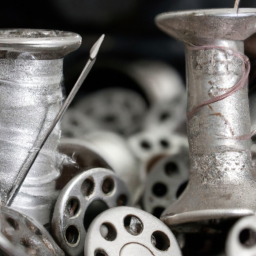
History of Cross Stitch Samplers
Cross stitch samplers have a rich history that dates back centuries. These beautiful and intricate works of art, often created by young women as a form of education, have evolved over time to become a beloved craft and an essential part of decorative needlework.
The Origins
The origins of cross stitch samplers can be traced back to the late Middle Ages in Europe. Initially, the samplers were created to showcase various stitches and patterns, allowing young girls to practice and master their needlework skills. The earliest samplers were primarily made by religious institutions and affluent households.

The Sampler’s Purpose
In the 17th and 18th centuries, samplers played a crucial role in a young girl’s education. As literacy rates were low, samplers served as a visual guide, teaching girls their letters, numbers, and basic embroidery techniques. These samplers often included various alphabets, numerals, and motifs, all stitched with colored threads onto linen fabric.

Changing Styles
As time passed, the purpose of samplers shifted from purely educational to decorative. By the 19th century, they began to reflect the fashion and styles of the time. Victorian samplers, for example, often incorporated floral motifs, sentimental verses, and intricate borders.

Modern Cross Stitch Samplers
In recent years, cross stitch samplers have experienced a resurgence in popularity. Modern stitchers often incorporate contemporary designs and motifs, bringing a fresh twist to this traditional craft. With the advent of technology, patterns can now be easily shared and purchased online, making the art of cross stitching more accessible to a wider audience.

Preserving an Art Form
Cross stitch samplers showcase the artistry, creativity, and skills of generations past. Museums and collectors around the world value these historical artifacts, ensuring their preservation for future generations to appreciate and study.

Today, cross stitch samplers continue to captivate both experienced and novice stitchers alike. The charm and enduring beauty of these meticulously stitched pieces serve as a testament to the rich history and lasting legacy of this timeless craft.




